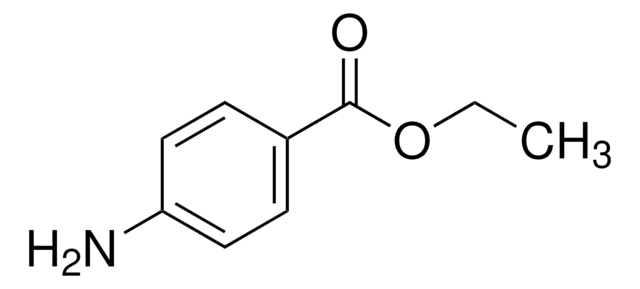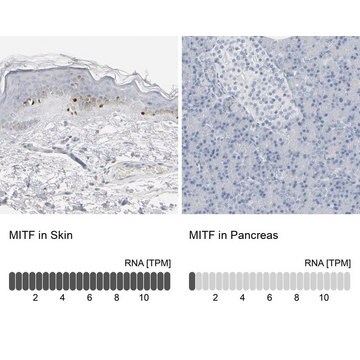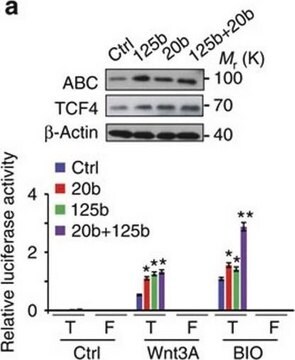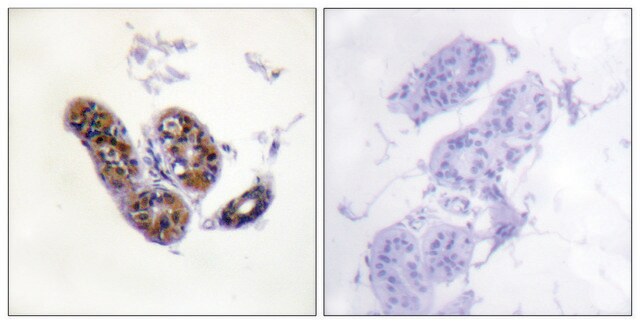MAB3747
Anti-Microphthalmia (Mi) Antibody, clone C5
clone C5, Chemicon®, from mouse
About This Item
Produtos recomendados
fonte biológica
mouse
Nível de qualidade
forma do anticorpo
purified immunoglobulin
tipo de produto de anticorpo
primary antibodies
clone
C5, monoclonal
reatividade de espécies
mouse
reatividade da espécie (prevista por homologia)
human, rat
fabricante/nome comercial
Chemicon®
técnica(s)
electrophoretic mobility shift assay: suitable
immunohistochemistry (formalin-fixed, paraffin-embedded sections): suitable
immunoprecipitation (IP): suitable
western blot: suitable
Isotipo
IgG1
Condições de expedição
wet ice
modificação pós-traducional do alvo
unmodified
Descrição geral
Especificidade
Imunogênio
Aplicação
A previous lot of this antibody was used in IP. (2 µg/mg of protein lysate)
Gel supershift assays:
A previous lot of this antibody was used in EMSA.
Immunohistochemistry(paraffin):
A previous lot of this antibody was used in IH on frozen and formalin/paraffin tissue sections.
Optimal working dilutions must be determined by end user.
Qualidade
Western Blot Analysis:
1:500 dilution of this lot detected Mi on 10 μg of Mouse Brain lysates.
Descrição-alvo
forma física
Armazenamento e estabilidade
Handling Recommendations: Upon receipt, and prior to removing the cap, centrifuge the vial and gently mix the solution. Aliquot into microcentrifuge tubes and store at -20°C. Avoid repeated freeze/thaw cycles, which may damage the IgG1 and affect product performance.
Nota de análise
501 Mel human melanoma cells, wild-type human, rat, mouse osteoclast cells.
Outras notas
Informações legais
Não está encontrando o produto certo?
Experimente o nosso Ferramenta de seleção de produtos.
Código de classe de armazenamento
12 - Non Combustible Liquids
Classe de risco de água (WGK)
WGK 2
Ponto de fulgor (°F)
Not applicable
Ponto de fulgor (°C)
Not applicable
Certificados de análise (COA)
Busque Certificados de análise (COA) digitando o Número do Lote do produto. Os números de lote e remessa podem ser encontrados no rótulo de um produto após a palavra “Lot” ou “Batch”.
Já possui este produto?
Encontre a documentação dos produtos que você adquiriu recentemente na biblioteca de documentos.
Nossa equipe de cientistas tem experiência em todas as áreas de pesquisa, incluindo Life Sciences, ciência de materiais, síntese química, cromatografia, química analítica e muitas outras.
Entre em contato com a assistência técnica







